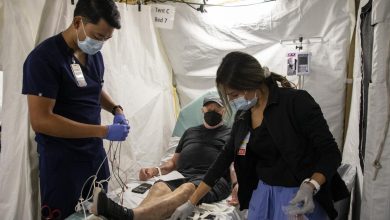FDA Butter Recall Explained: What You Need to Know Right Now

In recent weeks, consumers across the United States have been alarmed by news of a widespread butter recall initiated by the U.S. Food and Drug Administration (FDA). This recall is more than just a supply chain hiccup—it raises significant concerns about food safety, contamination risks, and the importance of staying informed about the products we consume daily.
Butter is a staple in millions of American households, used in everything from breakfast toast to elaborate baked goods. When a recall affects such a widely consumed item, it’s natural to feel anxious and uncertain. In this article, we’ll break down everything you need to know about the current FDA butter recall—what products are affected, why they were recalled, potential health risks, how to identify contaminated products, and what steps you should take as a consumer.
Let’s unpack this urgent issue and explore how you can protect your household and make safer food choices moving forward.
What Is a Food Recall, and How Does the FDA Handle It?
Before diving into the specifics of the butter recall, it’s essential to understand how the FDA manages food recalls in the U.S.
A food recall occurs when a product is removed from the market because it poses a risk to public health. The FDA, along with manufacturers and distributors, can initiate recalls for several reasons, including:
- Contamination (bacterial, chemical, or physical)
- Labeling errors (undeclared allergens, inaccurate ingredient lists)
- Packaging issues
- Foreign objects (plastic, metal, or other materials)
Recalls are classified into three categories:
- Class I Recall: Dangerous or defective products that could cause serious health problems or death.
- Class II Recall: Products that might cause temporary health problems or pose only a slight threat.
- Class III Recall: Products that are unlikely to cause harm but violate FDA labeling or manufacturing laws.
In the current butter recall, the issue falls under a Class I recall, making it the most serious type of recall the FDA issues.
Why Was the Butter Recalled?
According to the FDA and the responsible manufacturer, the butter recall was prompted due to possible contamination with Listeria monocytogenes—a harmful bacterium known to cause a severe illness called listeriosis.
What Is Listeria monocytogenes?
Listeria monocytogenes is a pathogen commonly found in soil, water, and animal feces. When food becomes contaminated with this bacterium, it can cause listeriosis—an infection particularly dangerous for:
- Pregnant women and their unborn babies
- Newborns
- Older adults
- People with weakened immune systems
Symptoms of listeriosis may include:
- Fever
- Muscle aches
- Nausea or diarrhea
- Headache and confusion
- Seizures (in severe cases)
In pregnant women, listeriosis can lead to miscarriage, stillbirth, or premature delivery. Because of the serious implications, any potential contamination with Listeria requires swift and decisive action.
Which Brands and Products Are Affected?
The recall involves multiple butter products distributed nationwide, particularly under store-brand private labels and a few nationally recognized names. The recalled items were manufactured by a third-party producer and then packaged under various brand names sold in:
- Grocery chains
- Big-box retailers
- Online marketplaces
Common Brands Included in the Recall:
Some of the affected brands include (examples only—refer to the latest FDA list for accuracy):
- Golden Creamery Unsalted Butter
- Home Dairy Salted Butter
- Great Value (Walmart)
- 365 Whole Foods Market Butter
- Generic store-brand butters
The products in question were typically sold in 1-lb, 2-lb, or 4-stick packaging and have expiration dates ranging from October 2025 to January 2026.
How to Identify Recalled Butter Products:
To determine if your butter is part of the recall:
- Check the package label for:
- UPC code
- Lot number
- Expiration (Best By) date
- Visit the FDA’s website or call the customer service number on the packaging.
- If you’re unsure, it’s best to dispose of the product safely or return it to the store where it was purchased.
Health Risks Associated With Contaminated Butter
While butter is not typically a high-risk food for bacterial growth due to its high-fat, low-water content, contamination during processing can still occur. In this case, the production facility responsible for the butter was found to have unsanitary conditions, and Listeria was identified during routine inspections.
Risk Factors for Consumers
Although healthy adults may only experience mild symptoms (if any), individuals in high-risk categories may face severe illness or even death. Since Listeria can survive at refrigerator temperatures, it’s particularly dangerous in dairy products stored cold for extended periods.
If you or a loved one has consumed a recalled butter product and you experience any symptoms of listeriosis, seek medical attention immediately.
What Should You Do If You Have a Recalled Product?
If you’ve identified that you purchased one of the affected butter products, follow these critical steps:
1. Stop Using the Product
Immediately cease use. Do not consume any butter that is part of the recall, even if it looks or smells normal.
2. Dispose or Return It
- If the product is unopened, you can return it to the store for a full refund.
- If the product is opened, the safest option is to seal it in a plastic bag and dispose of it in an outdoor trash bin.
3. Clean Your Refrigerator
Listeria can spread to other items via surfaces. To protect your food supply:
- Remove all items from the refrigerator
- Clean shelves and drawers with hot, soapy water
- Disinfect surfaces with a mixture of one tablespoon of bleach per gallon of water
4. Monitor for Symptoms
Watch for any signs of illness—especially in pregnant individuals, children, and the elderly. The incubation period for listeriosis can range from a few days up to 70 days, so long-term vigilance is important.
The Manufacturer’s Response and Corrective Actions
The company responsible for producing the butter—whose name has not yet been disclosed in some cases—has voluntarily recalled the affected products in cooperation with the FDA.
They have also:
- Suspended operations at the affected facility
- Initiated a full internal investigation
- Committed to revising their sanitation and testing protocols
- Begun retraining staff in food safety compliance
While voluntary, this recall underscores the need for stronger FDA oversight and stricter enforcement of sanitation in food production environments.
How Common Are Butter Recalls?
Butter recalls are relatively rare compared to other dairy products like cheese or milk. However, they do occur and are usually related to:
- Bacterial contamination (Listeria, Salmonella, E. coli)
- Foreign objects (such as bits of plastic or metal from processing equipment)
- Mislabeling (e.g., allergens like milk or soy not disclosed)
The current recall is among the largest butter recalls in recent memory, given the scale of distribution and the number of retailers affected.
Consumer Advocacy and Food Safety
This incident has renewed calls for increased transparency in the food supply chain and more robust consumer protections. Experts and advocacy groups argue that:
- Manufacturing facilities need regular, unannounced inspections
- Consumers deserve timely notifications when their food is at risk
- Retailers should be proactive in pulling affected items from shelves immediately
The FDA encourages consumers to report adverse events or complaints related to recalled foods via the MedWatch Safety Information and Adverse Event Reporting Program.
Tips for Staying Safe: Preventative Food Safety at Home
Food recalls are unsettling but not entirely avoidable. Here are a few tips to reduce your risk:
1. Stay Informed
- Sign up for FDA recall alerts at FDA.gov
- Follow news outlets and food safety blogs for timely updates
2. Practice Good Food Hygiene
- Wash hands and surfaces regularly
- Store butter and other dairy at correct temperatures
- Use clean utensils to prevent cross-contamination
3. Keep an Eye on Expiry Dates
- Rotate items in your fridge to use older ones first
- Freeze butter you won’t use within a few weeks
The Bigger Picture: A Wake-Up Call for the Food Industry
The butter recall highlights the fragility and complexity of the modern food production system. With outsourcing, mass distribution, and third-party packaging, a single issue at one facility can have nationwide consequences.
While this event is certainly concerning, it can also serve as a catalyst for:
- Stronger federal regulation
- Increased consumer education
- Enhanced corporate responsibility
Conclusion
The FDA’s butter recall is a sobering reminder of how even the most basic food items can pose unexpected risks. With Listeria contamination identified and thousands of butter products pulled from store shelves, consumers must stay vigilant, informed, and proactive.
Whether or not your household has been directly affected, the lessons here are clear: know where your food comes from, check for recalls regularly, and always prioritize safety over convenience.
By following FDA guidance and maintaining good food safety habits, you can protect yourself and your loved ones from potential harm—today and in the future.




